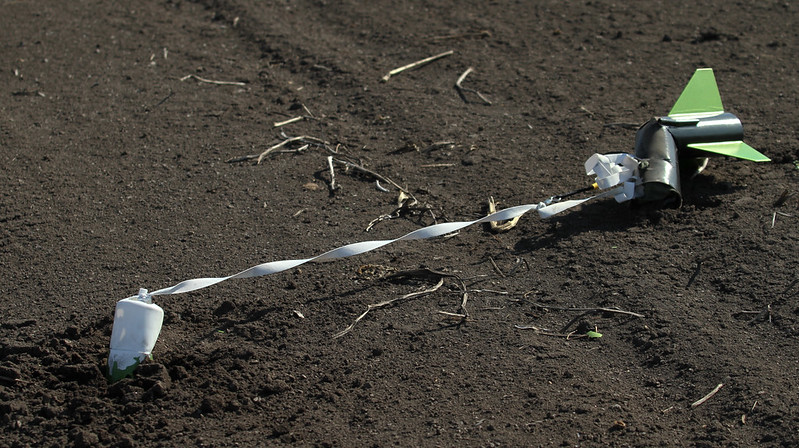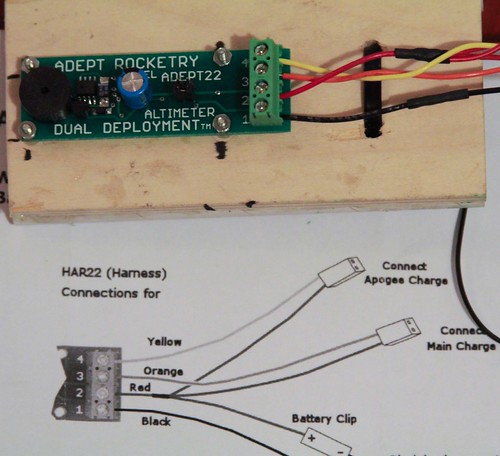I had made a suggestion on your other thread about altimeters that for your cert flight you might go with motor deployment, but build the rocket so that it could be set up for DD later. Take a look at those options especially if your rocket is getting heavy because it can help you with I motor choices.
Some things you might want to do just to be on the safe side...
Download Open Rocket. It is free and relatively easy to use. Best of all, it can read Rocksim files. Once you have that go to Mad Cow and download the Rocksim for this rocket. Take about a 1" think piece of wood (which is actually more like 5/8") and clamp it into a bench vise making sure the edge is as level as possible. Balance your rocket on it. Using a tape measure, carefully measure the distance from the tip of your nose cone to the center of the block of wood in the vise. This is your CG as best you can determine. You know the overall weight but you need to layer the weights of all the components of your rocket so that when you have the total weight, the CG is correct to what you measured.
Now you can play around with motor designs, etc. and see how the motor weights impact your balance. Your CG needs to be 1 caliber (diameter of the airframe) forward of your Center of Pressure (CP). Otherwise you have a huge risk of flying this once.
Generally, this is an overstable rocket but you really have added a lot of aft end weight. Assuming your AV bay and electronics weighs 20 oz. (570 g - that includes rods, nuts bolts, sled, electronics, batteries, etc. - This is heavier than usual but if you overbuilt elsewhere then you probably did here as well). Not being critical, that's the way it is so you are going to have to make other adjustments accordingly as you come up with various motor sizes. I am going to work the rest of the way using SAE and Imperial units of measure. Open Rocket settings can be those or metric, your choice in the options.
A big challenge is Thrust-to-weight ratio. You want to fly this on an I. Your rocket with an I is going to be 7.5 pounds. One Newton = 0.2248 ft. pounds of thrust. You need no less than a 5:1 Thrust/Weight ratio to get your bird safely off the ground. This weight includes the motor. So 5 x 7.5 lbs./0.2248 = no less than 170 average NS of thrust at ignition. Some of the Longburn motors are out, but you still have a wide choice of other motors. I use CTI motors myself and an I445 V-Max looks like a decent 54mm choice. With the weight of this motor added to my sim of your rocket you have a stability of 1.28 ca. Pretty good. The rocket sims to 1.800' on this motor.
The problem is going to be when you get to heavier motors. Let's say you want to use a J360 Skidmark. Great motor. Lots of flame sparks and NOISE! The problem is that the motor weighs another pound and a sixth, and all that weight is at the back. Now your stability is down to 0.88 ca. which means to bring it stable, you need to add 2 ounces to the nose cone.
Let's say you want to fly it on a K260... A real fine longburn that will give you a slow boost and burn forever (9 seconds) and send that bird up over a mile. You will need to add a couple more ounces. You can add those in the build now, or you can create a removable weight setup so that you can still get the altitude on smaller motors when you don't need the weight.
This is the file I put together. Download Open Rocket and then copy and paste this file into Documents/Open Rocket. Play around.
You can see after doing this why people were concerned about your weight. But hey It's your rocket. Build it the way you want to build it. Just understand the tradeoffs.
Good luck.
View attachment frenzy.ork










